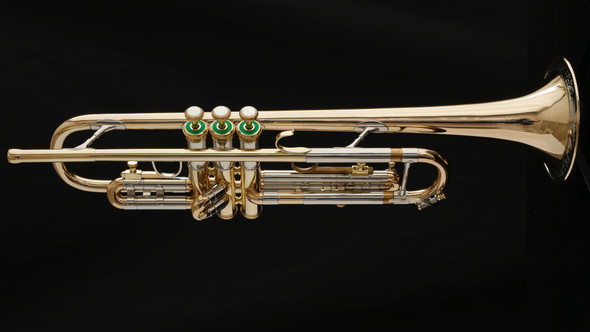


The nickel plate below that is a template used when hand cutting the rim shape.

The top middle cutter came from a different source and is the sort of tool that Olds used for cutting the cups in the 1970s. There are about 60 of these in his tool box, mostly labeled as copies of other maker's mouthpieces and including trumpet, cornet, French horn, alto, trombone and tuba. The three cutters in the upper left are all used in the tool holder seen in the lower left. The fourth photo shows a small sampling of Roe Plimpton's tools. The middle example has an ivory rim and cup, which Olds had offered in trombone mouthpieces from at least 1925, although none of the known catalogs show this option for trumpet. The circa 1934 catalog shows both the funnel shape and bowl shapes made concurrently for different models. These are stamped: “Olds 27”, “Olds” and “Olds OS”. The first photo shows three trumpet mouthpieces made before about 1935 but not likely before the introduction of the Olds trumpets in 1928. I know that some of the tools were removed from the tool box before I acquired it, but it is still a good representation of what he used over the decades. Roe Plimpton was a highly regarded professional trombone player and made custom mouthpieces for Olds from about 1930 until just before his death in 1963. Just a few came to me with the instrument for which it was originally supplied.Ī related collection is comprised of tools and a few mouthpieces that I purchased from Richard Plimpton, the son of Roe Plimpton. Most of these came to me randomly in boxes of mouthpieces or in instrument cases where they didn't originate. This is by no means a comprehensive representation, but shows changing styles and a few custom ordered examples. That said, I wanted to share some of the early mouthpieces from F.E. My years in this business, including making some mouthpieces, have taught me that mouthpieces are a specialty beyond what I do. Most importantly, I try to identify mouthpieces that most likely came with the instrument in question when new. Not being expert in the subject, I'm usually careful to avoid saying too much about mouthpieces other than identifying style, age and maker where possible.


 0 kommentar(er)
0 kommentar(er)
